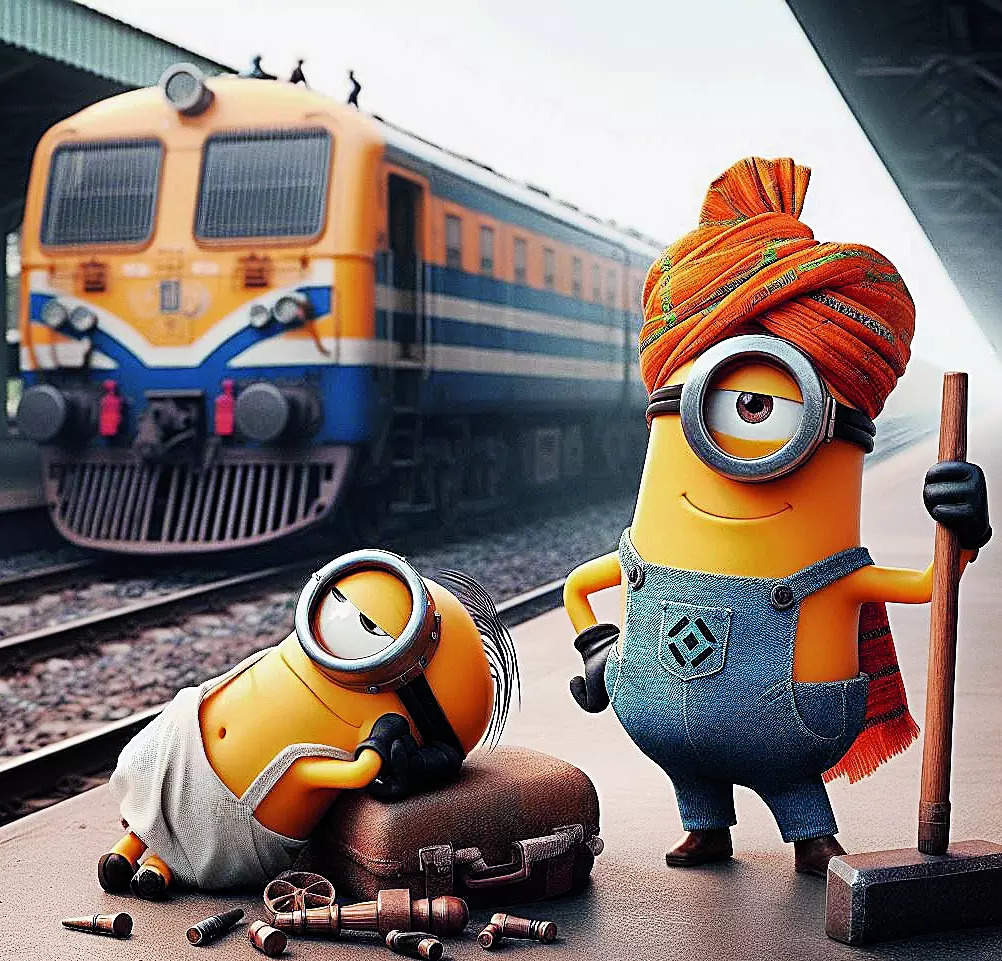
When the train took off without a driver, I assume there was chaos and urgent meetings among rail officials at the first station – but not in any way to suggest that this was a mad thing. It was done with the implicit understanding that this was India, and such things – or even crazier things – are all in a day’s work.
The foreign press jumped on this story as an example of the chaos and lunacy of Indian infrastructure, with tongue-in-cheek headlines, such as ‘Runaway Indian train ignores driver, takes off’. Indians got all patriotic and complained on X that the foreign press only wrote about India’s mishaps. ‘What about the fact that we are a world leader in AI?!’ Arguments got polarised and nonsensical, awash in illiterate whataboutery.
Neither side seems to realise that whatever is true about India’s development, the opposite is also true- which is quite unique among nations. I’ll give you two examples.
#1 There’s a very high-end luxury high-rise in a suburb of Mumbai that boasts state-of-the-art tech. Doors to the flats, minimum 5 crore each, can be opened with an iPhone swoosh. One can enter the gym with an eye scan, and the swimming pool is heated with thermal radio waves. Theoretically, this building has all facilities one would find in Dubai or Singapore.
In that same building, given it’s next to a national park, a leopard went into the table-tennis room and sat on top of the table, perhaps being a fan of the sport. Naturally, mayhem ensued. The building’s management sealed the door, abandoned hi-tech in panic, and printed on an A4 paper (in Courier 12 font), ‘Leopard in TT Room. DO NOT enter,’ and rushed to call police and animal rescue.At that exact moment, in the rooftop clubhouse area, a small conference was going on, organised by elite financier residents, with lots of global investors joining by video conference, with the title, ‘Is India already a global superpower?’#2 Some months ago, probably the world’s most famous comedian alive, Trevor Noah, went to Bangalore for a show. His team picked an excellent warehouse-type venue – common for comedy in the US – miles outside the city. The venue was so cool that the mic didn’t work. Noah cancelled the show.
Indian social media went nuts saying how India is a third-world place mired in infrastructural issues, unable to get basic logistics (traffic, parking, sound) right. Exactly the minute Noah’s mic echoed through the warehouse, creating an inaudible reverb, Isro, located not too far away from the warehouse, gently landed a small rover on the moon.
When foreign investors say, ‘India is impossible to define’, what they mean is India is impossible to reconcile. What baffles people living in uniform societies is how we treat what they would consider an insane thing as a normal thing. They can’t understand a country where a 1 crore BMW SUV sits calmly in traffic next to a 2-wheeler with two people riding pillion without helmets, one holding a giant glass mirror and the other a goat. Neither of those modes of transport is a definition of the Indian economy’s future.
Indian Railways ferry 24 million passengers a year, almost the same as the population of Australia. And sometimes a train takes off on its own. Neither makes the country great or foolish. It makes it what it is.









